Hiking in the Black Forest
 From the locks at Vogelgrund, I crossed over into Germany and followed the back roads up into the mountains near the Black Forest town of Titisee. The villages near the river were surrounded by orchards of plum and apple trees. The plums were obviously ripe on the trees and roadside stands were selling the first pickings of apples. These orchards disappeared as the hills got higher and higher away from the river valley. Finally, it all turned into the pine trees of the Black Forest.
From the locks at Vogelgrund, I crossed over into Germany and followed the back roads up into the mountains near the Black Forest town of Titisee. The villages near the river were surrounded by orchards of plum and apple trees. The plums were obviously ripe on the trees and roadside stands were selling the first pickings of apples. These orchards disappeared as the hills got higher and higher away from the river valley. Finally, it all turned into the pine trees of the Black Forest.
The Black Forest, like the Vosges, is a popular place for hikers. The woods are criss-crossed with trails that are carefully mapped in terms of distance and difficulty. Some folks spend their whole day out walking. I only spent about three hours.
Some say the Black Forest gets its name because, when viewed from inside, the trees block out the light and make it like night. This is not entirely true. Some sunlight reaches the ground, especially where the hiking paths are carved. (Actually, many of the hiking paths are logging paths. Walking through the forest you see piles of firewood carfully stacked for later pick-up.)
So not black....but definitely a lot of shade. And in every direction you look, the tree trunks go on forever, or at least into the distance where the blend together and appear almost as wall.


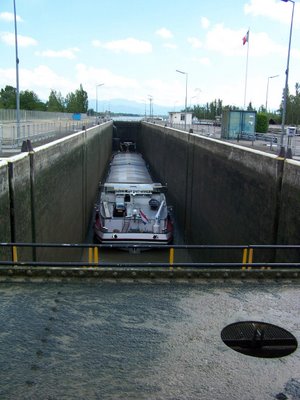


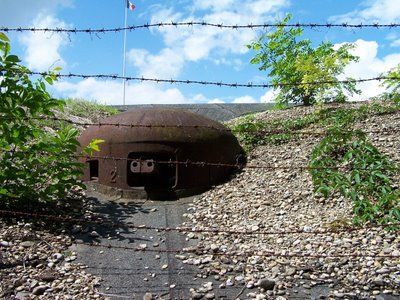
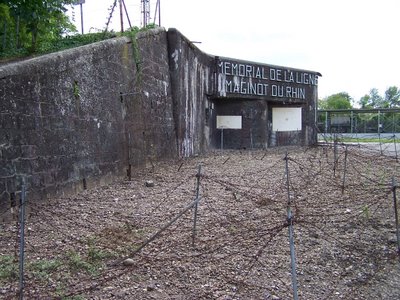
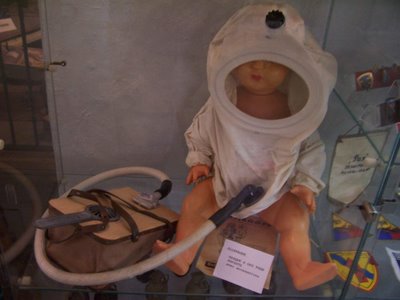
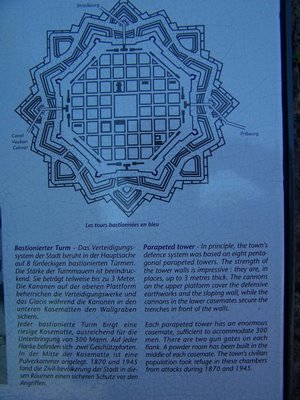
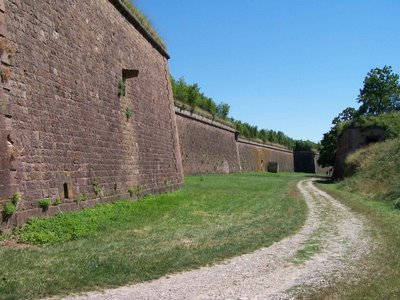 Today, the village of Neuf Brisach still sits almost entirely within the old fortifications designed by Vauban. You can still walk around the defensive walls and admire the parapets and cannon emplacements. Sheep graze in the areas designed to be flooded in case of attack.
Today, the village of Neuf Brisach still sits almost entirely within the old fortifications designed by Vauban. You can still walk around the defensive walls and admire the parapets and cannon emplacements. Sheep graze in the areas designed to be flooded in case of attack. 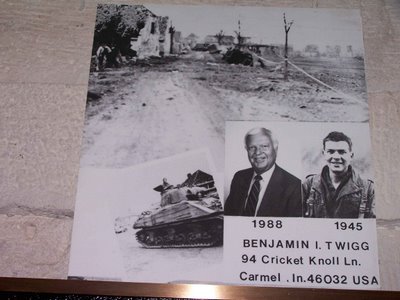
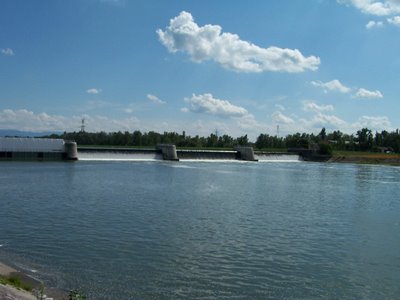
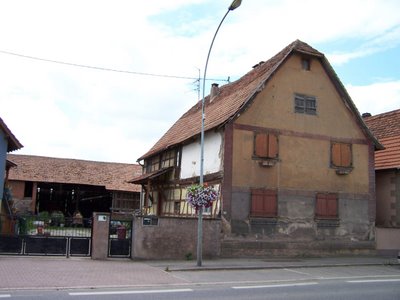
 Farm towns seem to be sprinkled about every 4 or 5 kilometers. I suppose that this was fixed by the distance that one could travel each day to and from the fields.
Farm towns seem to be sprinkled about every 4 or 5 kilometers. I suppose that this was fixed by the distance that one could travel each day to and from the fields.


 Actually, it was OK. It's just I went in with the wrong expectations. There were lots of cool, shiny stainless steel gadgets for making wine. (Not home brewing, mind you, but on a comercial scale). Lots of bottling lines and fermentation tanks. Tents with people selling corks by the thousands.
Actually, it was OK. It's just I went in with the wrong expectations. There were lots of cool, shiny stainless steel gadgets for making wine. (Not home brewing, mind you, but on a comercial scale). Lots of bottling lines and fermentation tanks. Tents with people selling corks by the thousands.


 Rosheim is also a big producer of Munster cheese. This fact, of course, calls for a festival in honor of the smelly stuff.
Rosheim is also a big producer of Munster cheese. This fact, of course, calls for a festival in honor of the smelly stuff. You have to admit, the band shown above just screams "cheese festival".
You have to admit, the band shown above just screams "cheese festival". Finally, there was the traditional Alsatian dancing. Pictures below show first the older group, and then the younger group that is carrying on the tradition.
Finally, there was the traditional Alsatian dancing. Pictures below show first the older group, and then the younger group that is carrying on the tradition. 








 Finally, being a stained-glass freak, I leave you with a photo of the grand rosette in the facade, and a random window from the North wall.
Finally, being a stained-glass freak, I leave you with a photo of the grand rosette in the facade, and a random window from the North wall.


 The picture above shows the ladies on top of the wall. You can barely make out one of the towers in the background behind the trees. The intro picture and the following one are views of the lake from the top. The scenery was very nice. Even nicer was the cool breeze that came across the top of the wall.
The picture above shows the ladies on top of the wall. You can barely make out one of the towers in the background behind the trees. The intro picture and the following one are views of the lake from the top. The scenery was very nice. Even nicer was the cool breeze that came across the top of the wall.

 We arrived in the city right at lunch time and decided to get something to eat on an old paddle-wheeler that is anchored and serves as a restaurant. The servers were pretty amazing in that they could speak both English (for the Webers/Randazzos) and Spanish (for the Vegas). They could also have done German, French, or Italian...but that would have been showing off. The servers only had trouble translating one of the dishes from the German menu. They couldn't think of the English word. Finally, they just pointed to one of the ducks swimming on the lake and said "one of those things".
We arrived in the city right at lunch time and decided to get something to eat on an old paddle-wheeler that is anchored and serves as a restaurant. The servers were pretty amazing in that they could speak both English (for the Webers/Randazzos) and Spanish (for the Vegas). They could also have done German, French, or Italian...but that would have been showing off. The servers only had trouble translating one of the dishes from the German menu. They couldn't think of the English word. Finally, they just pointed to one of the ducks swimming on the lake and said "one of those things".  After lunch, we took a walk through town and crossed over the old wooden bridge. You see,
After lunch, we took a walk through town and crossed over the old wooden bridge. You see, 

 Of course, the banks of the river/lake are lined with quaint old buildings. You have to have something to draw the tourists. We took a walk along the banks toward the old city walls that sit behind the old town.
Of course, the banks of the river/lake are lined with quaint old buildings. You have to have something to draw the tourists. We took a walk along the banks toward the old city walls that sit behind the old town.
 Finally, the picture below was taken in one of the mirrors at Versailles. Theresa is especially proud of her cleverness in taking this one.
Finally, the picture below was taken in one of the mirrors at Versailles. Theresa is especially proud of her cleverness in taking this one.
